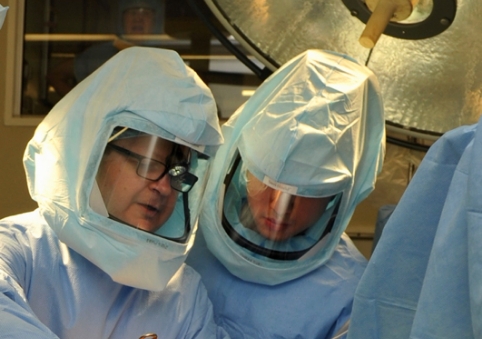Making the choice – when is surgery right for me?
Dr Ellis will consider your need for surgery based on your level of pain, your functional capacity, your medical history and physical capability. Your decision to go ahead with surgery should be considered when you feel fully informed. Knee replacement surgery is a major procedure, and it’s important that you consider both its risks and benefits. Dr Ellis uses innovative technologies including robotics (MAKO SmartRobotics™) during surgery to deliver a knee replacement that is best suited to your body’s biomechanics.
A healthy knee:
The knee is one of your body’s largest weight-bearing joints. Nearly normal knee function is required to perform routine everyday activities.
The knee joint consists of the lower end of the thigh bone (femur) which rotates on the upper end of the shin bone (tibia) and the knee cap (patella) which slides in a groove on the end of the femur. Large ligaments attach to the femur and tibia to provide stability. The long thigh muscles give the knee strength.
Why do I need my knee replaced?
In a healthy knee, abutting joint surfaces are covered with articular cartilage, a smooth substance that cushions the bones and enables them to move easily. All remaining surfaces of the knee are covered by a thin, smooth tissue liner called the synovial membrane.
This membrane releases a special fluid that lubricates the knee which reduces friction to nearly zero in a healthy knee. Normally, all components work in harmony. Disease and injury can disrupt this, resulting in pain, muscle weakness and inhibited function.
 info@orthonorth.com.au
info@orthonorth.com.au  +61 2 9460 9100
+61 2 9460 9100 






